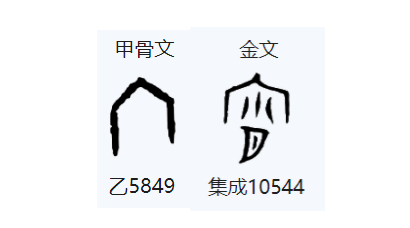Special Coverage: Yuanxiao Festival in Ancient Chinese Writing
Special Coverage: Yuanxiao Festival in Ancient Chinese Writing
双语特别策划
——古文字里“闹”元宵
As the Chinese saying goes, "The Chinese Lunar New Year lasts until the Yuanxiao Festival (元宵节 in Chinese, or the Lantern Festival)." The Yuanxiao Festival is not only the first major festival after the Spring Festival in China, but also the first day with a full-moon night on the Chinese lunar calendar.
俗话说,“不过元宵不出年。”元宵节不仅是春节过后的第一个重要节日,也是农历新年的第一个月圆之夜。
Click on the video
In recent years, China has been opening its door wider to the outside world. As the traditions of the Yuanxiao Festival spread around the world, many foreigners also celebrate it. Do you know the original meaning of the characters of "Yuan" (元 in Chinese) and "Xiao" (宵 in Chinese)? To better celebrate the festival, you need to know something about it.
近年来,随着中国对外开放的力度不断加大,许多外国人也开始过起了元宵节。那么,“元”的本义是什么?“宵”的含义又为何?“闹”元宵,你有必要了解一下她的前世今生。

Picture 1: "元" in oracle bone inscriptions. [Photo/National Museum of Chinese Writing]
The character "Yuan" is first seen in oracle bone inscriptions. In both oracle bone inscriptions and inscriptions on China's ancient bronze objects, the character "Yuan" looks like one standing sideways with his head highlighted (Picture 1), whose original meaning is "head" (头 in Chinese). "Head" is not only the first part of the body from top to bottom, but also the most important part, so "Yuan" also has some extended meaning in Chinese, such as "being important", "the first", "the start", etc. In Chinese, "Yuan" is also used to describe the origin of all things, meaning "fundamental". The character "Yuan" of the Yuanxiao Festival shares the same meaning as that of Yuandan (元旦 in Chinese, or New Year's Day), indicating "the first".
“元”字,始见于甲骨文。从甲骨文和金文来看,“元”字就像是一个侧立的人,头部突出(见图1),本意即“头”。头,不仅是身体从上到下的起始部分,也是最重要的部分,因此“元”字在汉语中又有了“重要、第一、开始”等引申义,也可以用来表示天地万物的本源,含有“根本”的意思。元宵的“元”与元旦的“元”同意,都是“第一”的意思。

Picture 2: "宵" in inscriptions on China's ancient bronze objects. [Photo/National Museum of Chinese Writing]
As a pictophonetic character, "Xiao" (宵) means "night", with "肖" representing the sound. In the oracle bone inscriptions that have been identified so far, the character "Xiao" has not yet been found, but "宀" ( a part related to its meaning) has been frequently seen. In oracle bone inscriptions and inscriptions on China's ancient bronze objects, "宀" looks like a house (Picture 2), representing nighttime when people usually rest in the house.
“宵”字本意为夜晚,声旁为“肖”。在目前已经识别出来的甲骨文中,虽然还没有遇到“宵”字,但它的形旁“宀”在甲骨文中却已经多次出现。甲骨文中的“宀”字像房屋,金文也同样如此(见图2),表示入夜时段,此时的人们多在屋内休息。
"Yuanxiao", therefore, indicates the first day with a full-moon night on the Chinese lunar calendar. To celebrate this special day, people usually enjoy lanterns, solve riddles and do some shopping, bringing the Spring Festival cheer to a new climax.
因此,“元宵”指的就是农历新年中的第一个月圆之夜。为了庆祝这一特殊的日子,在这一天,人们纷纷走上街头,赏灯、猜谜、逛集市,将新春佳节的欢乐氛围推向又一个高潮。(文案/赵汉青 播音/王家琦 制作/王君艺 任建东 审校/张军平)

